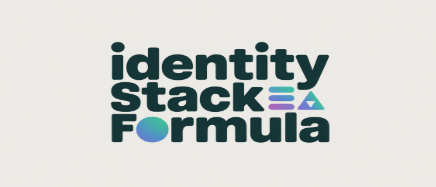

Most people create a community website the same way they approach New Year’s resolutions – with enthusiasm but without systems. They focus on the outcome (a thriving community) instead of the process (daily habits that build engagement). The result? 90% of new online communities fail within their first year.
The communities that succeed don’t rely on motivation or viral moments. They’re built on “Community Compound Interest” – small, consistent actions that create exponential growth over time. Here’s the systematic approach to building a community website that doesn’t just launch, but lasts.
Before you choose a single community website builder or write a single post, you need to get clear on identity. Not your identity – your community’s identity.
Successful communities aren’t built around topics. They’re built around identities. Instead of “a community about fitness,” think “a place for people who see themselves as everyday athletes.” Instead of “a cooking forum,” create “a home for kitchen experimenters who love to share their discoveries.”
This isn’t semantic wordplay. It’s the difference between a collection of posts and a genuine tribe.
When someone joins your community, they should immediately think: “These are my people.”

Like building any habit, creating a successful online community happens in predictable stages. Each stage requires different systems and strategies.
Goal: Make joining obvious and attractive
This is where most people get stuck. They spend months perfecting features instead of proving value. The Foundation Stage isn’t about building the perfect platform – it’s about creating the minimum viable community that delivers maximum value.
The Foundation Habits:
Platform Selection Framework:
The key insight: Your platform matters far less than your content and engagement strategy. I’ve seen thriving communities built on simple Facebook groups and failed communities built on expensive custom platforms.
Goal: Make participation irresistible
This stage is about creating what behavioral scientists call “temptation bundling” – pairing community participation with immediate rewards and social recognition.
The Traction System:
Content Categories That Drive Engagement:
The secret sauce isn’t having more content – it’s having more relevant content that reinforces member identity.
Goal: Make community participation a keystone habit
At this stage, your community starts growing through word-of-mouth. Members aren’t just consuming content – they’re creating it. Your job shifts from content creator to community curator.
The Growth Multiplication System:
Community Engagement Metrics That Matter:
Vanity metrics like total member count are largely meaningless. A community of 100 highly engaged members will always outperform 1,000 passive subscribers.
Goal: Make leaving the community feel like a loss
This is where your community becomes what economists call a “high switching cost” platform. Members have invested so much time, effort, and relationship-building that leaving feels like abandoning a part of themselves.
The Evolution Framework:
The most successful communities at this stage run themselves. Your role becomes strategic rather than operational.

The most powerful aspect of building a community website isn’t the technology – it’s the compound effect of consistent, small actions over time.
A daily 15-minute investment in community engagement becomes 90+ hours per year. Those 90 hours, applied systematically, can create connections and opportunities that transform businesses and lives.
But here’s what most people miss: The compound effect only works if you’re consistent. Posting 10 times in one week and then disappearing for a month creates negative momentum. Daily small actions beat sporadic large efforts every time.
Building a successful community website isn’t about having the best features or the biggest budget. It’s about becoming the type of person who creates value for others consistently, systematically, and sustainably.
Every day, ask yourself: “What kind of community builder am I becoming?” Are you becoming someone who shows up consistently? Someone who celebrates others’ wins? Someone who facilitates connections between members?
Your community will become a reflection of your daily habits as a leader. Focus on the process, trust the system, and let the compound effect create the thriving online community you envision.
The path to create a community website that truly matters isn’t complicated – but it does require commitment to small, daily actions that compound over time. Start with systems, not goals. Focus on engagement, not growth. Build habits, not just features.
Your community isn’t just a website – it’s a platform for accelerating human connection and growth. The question isn’t whether you have time to build one systematically. The question is whether you can afford not to.
Remember: Successful communities aren’t built on perfect launches – they’re built on consistent, daily habits that compound into extraordinary results.
©2025 Pinch - All Rights Reserved.